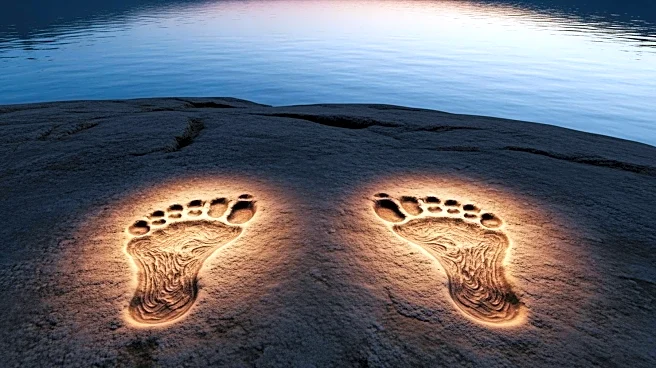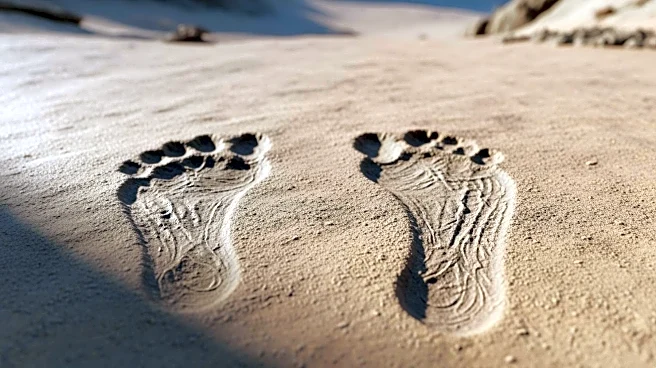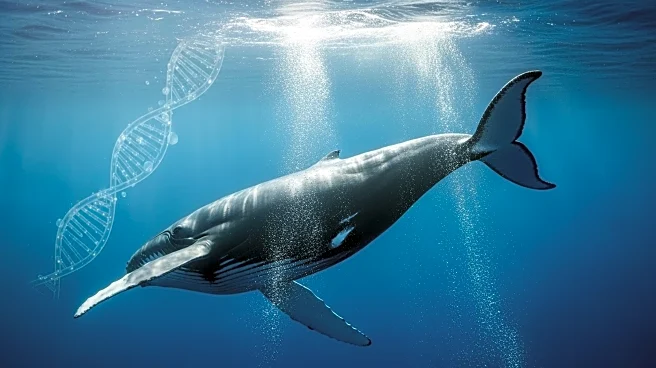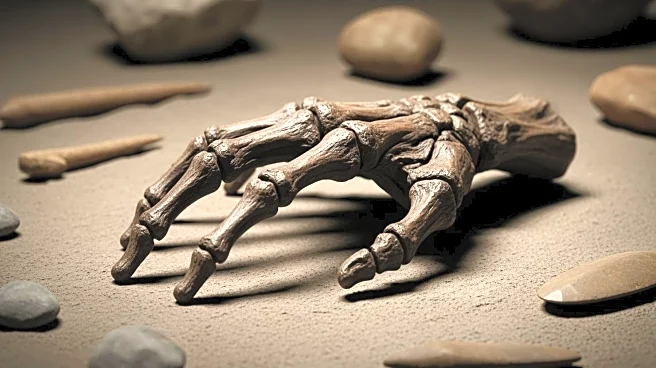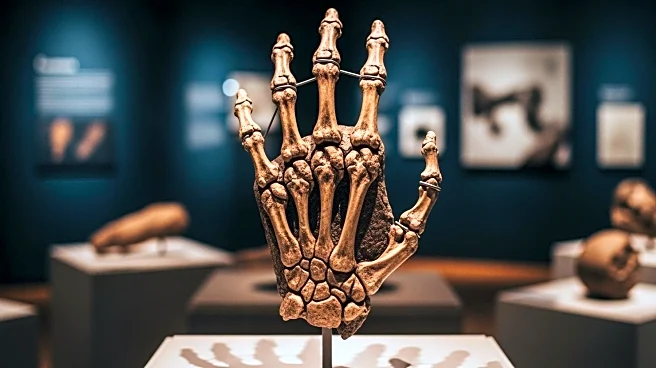What's Happening?
A groundbreaking study has uncovered fossilized footprints at Lake Turkana in northern Kenya, revealing that two extinct species of human ancestors, Homo erectus and Paranthropus boisei, lived side-by-side
approximately 1.5 million years ago. The footprints were found in a layer of wet silt, which preserved the impressions of various species, including hominins, birds, and hoofed mammals. The study, led by Craig Feibel from Rutgers School of Arts and Sciences, utilized cutting-edge 3D imaging technologies to analyze the footprints, providing insights into the behavior and movement of these early humans. The findings demonstrate that these species shared the same habitat, offering a rare glimpse into their coexistence and interactions.
Why It's Important?
This discovery is significant as it provides direct evidence of coexistence between different hominin species, offering new insights into human evolution. The presence of Homo erectus and Paranthropus boisei on the same surface suggests they may have shared resources and habitats, potentially influencing their evolutionary paths. Understanding how these species interacted and adapted to their environment can shed light on the roles of cooperation and competition in shaping human evolution. The study also highlights the importance of trace fossils, such as footprints, in capturing behavior and movement, which are crucial for reconstructing the ecological dynamics of ancient environments.
What's Next?
The study opens up new avenues for research into the ecological interactions between early human species. Future investigations may focus on how these species partitioned resources and avoided conflict, as well as the implications for their survival and adaptation strategies. Researchers may also explore other sites with similar geological conditions to uncover more evidence of coexistence and interaction among hominin species. The findings could lead to a deeper understanding of the evolutionary pressures that shaped the development of modern humans.
Beyond the Headlines
The discovery of these footprints not only provides a snapshot of ancient life but also raises questions about the social dynamics and environmental challenges faced by early humans. The coexistence of Homo erectus and Paranthropus boisei suggests a complex interplay of competition and cooperation, which may have influenced their evolutionary trajectories. This research underscores the importance of interdisciplinary approaches, combining geology, anthropology, and advanced imaging technologies, to unravel the mysteries of human ancestry.
